Wow, I’ve just serviced a complete Kenwood L-1000 hi-fi system! This is incredible gear, beautifully constructed, with stellar build-quality.
The Kenwood L-1000 series are becoming rare now, so to find a complete system in the hands of its original owner is something pretty special. This stack of gear consisted of the Kenwood L-1000M power amplifier, L-1000C preamplifier, L-1000D CD player and L-1000T tuner.
I’ve written about this wonderful series of hi-fi equipment before. Previously, I serviced and repaired a stunning Kenwood L-1000D CD player and L-1000T tuner. You can read all about those repairs and much more here.
I’ll be writing detailed articles about each L-1000 component, detailing the construction, servicing required and other aspects very soon. In the meantime, a few pics to whet your appetite 🙂
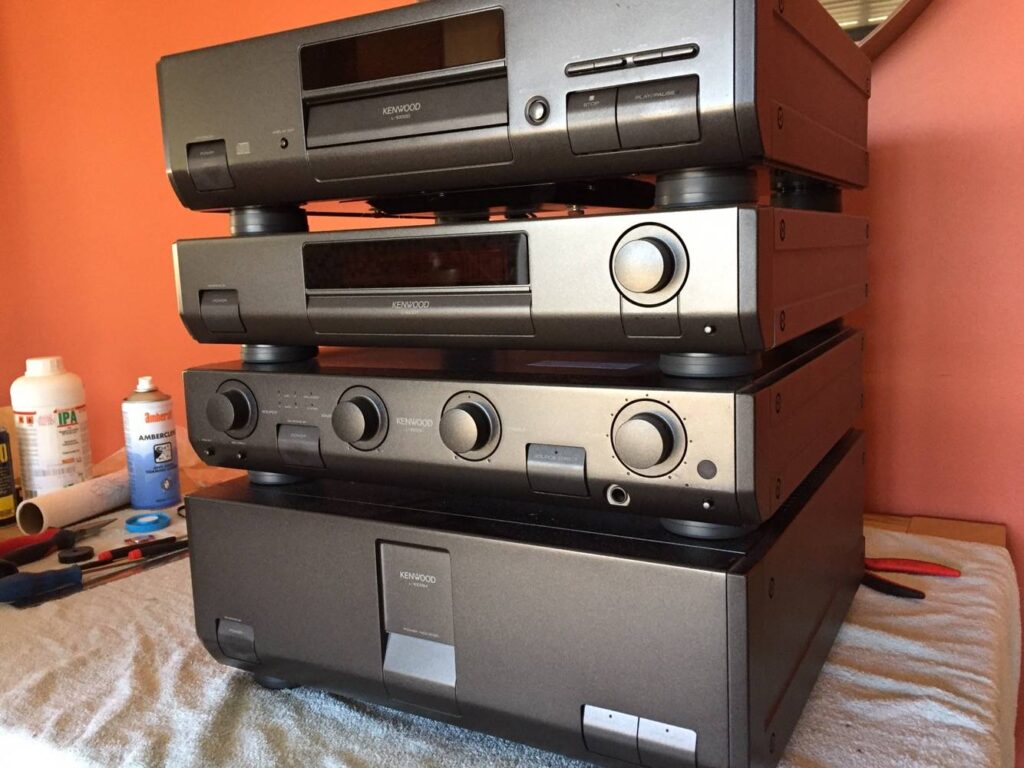
Discover more from LiQUiD AUDiO
Subscribe to get the latest posts sent to your email.

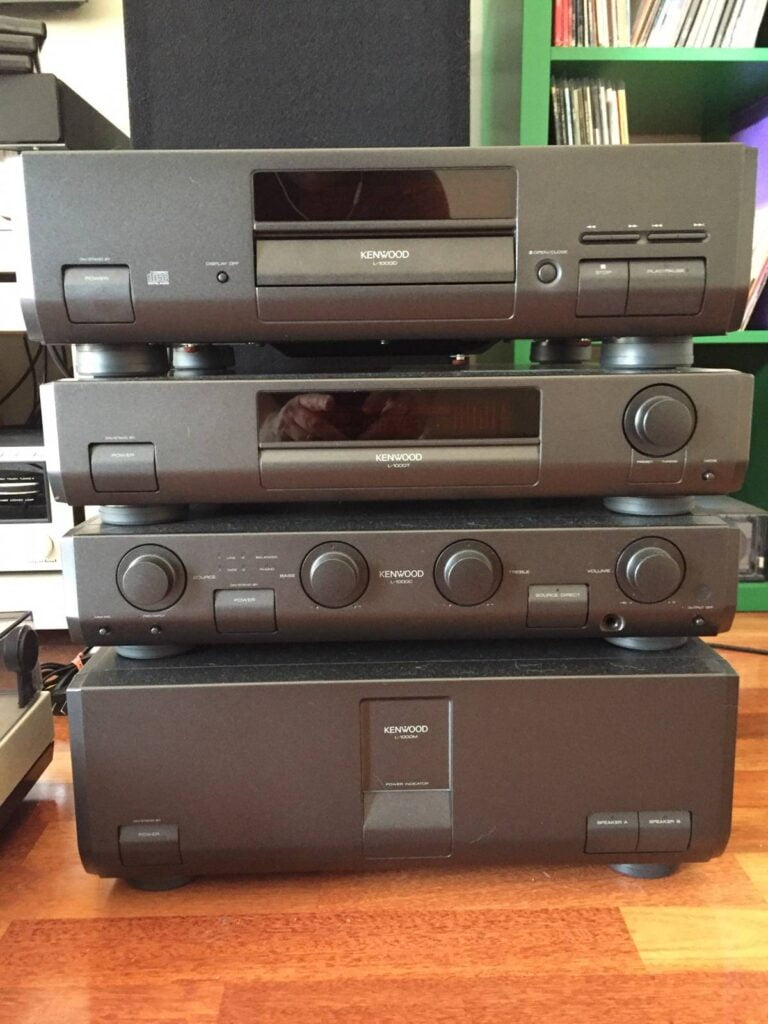
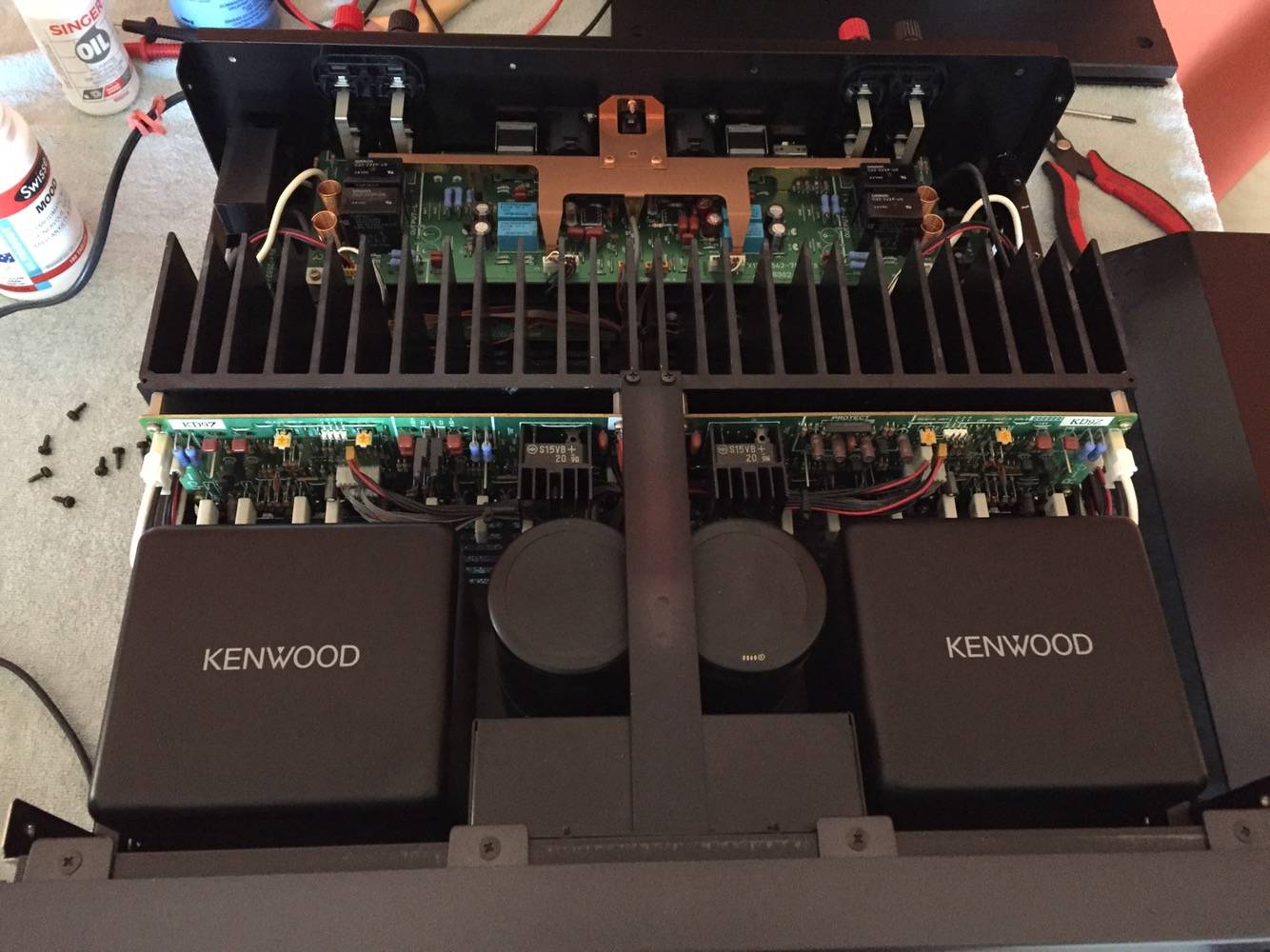
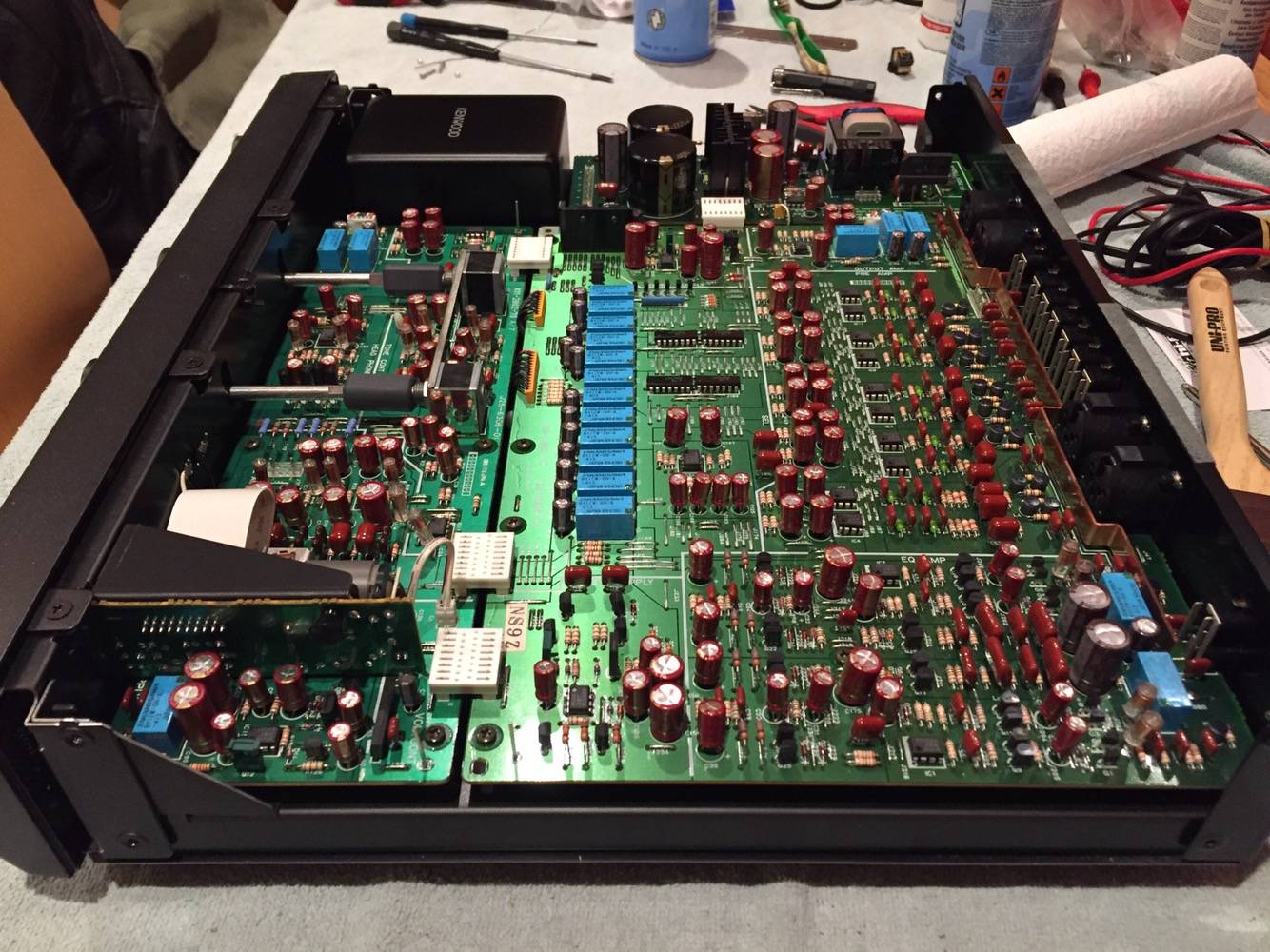
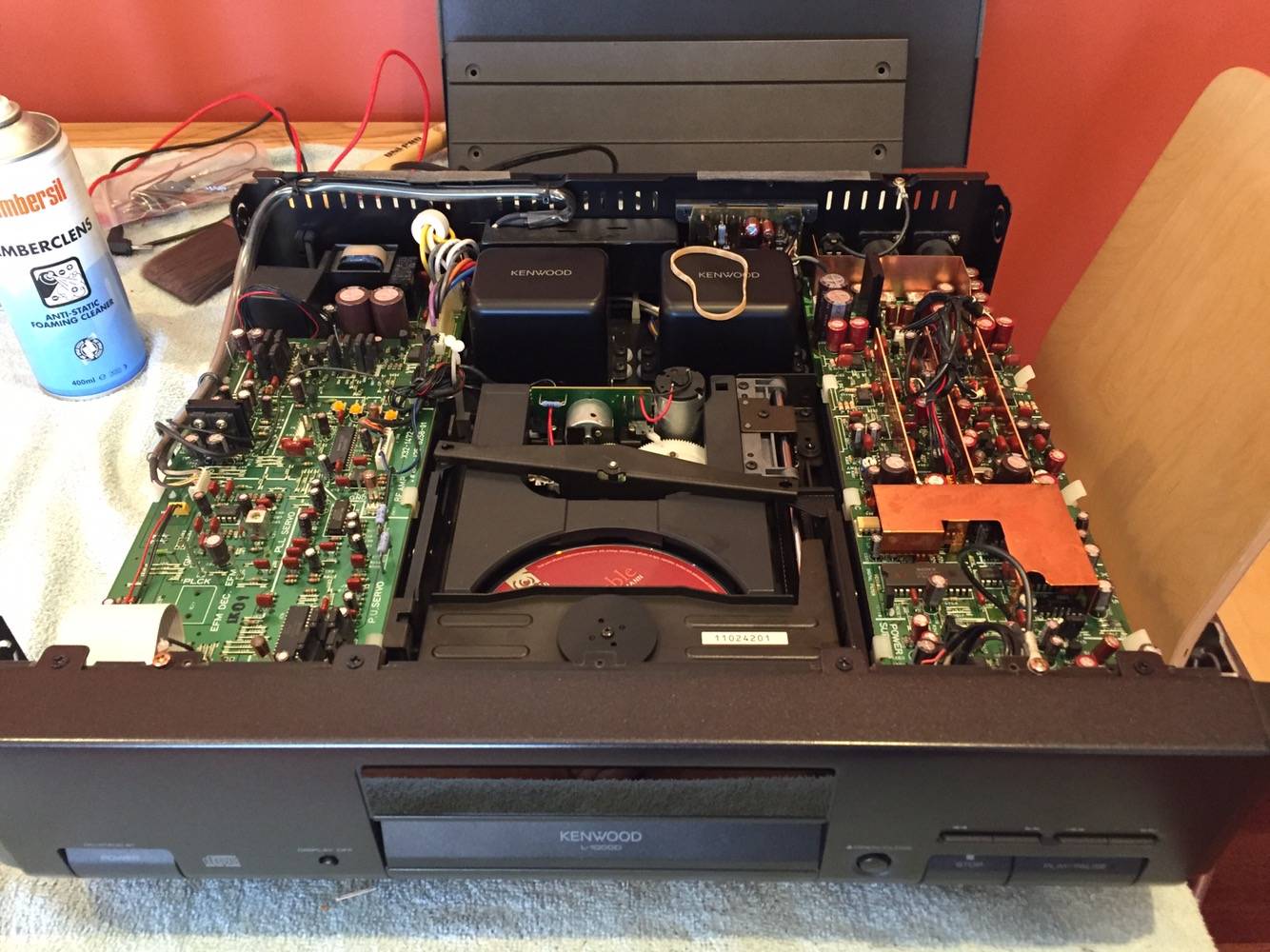

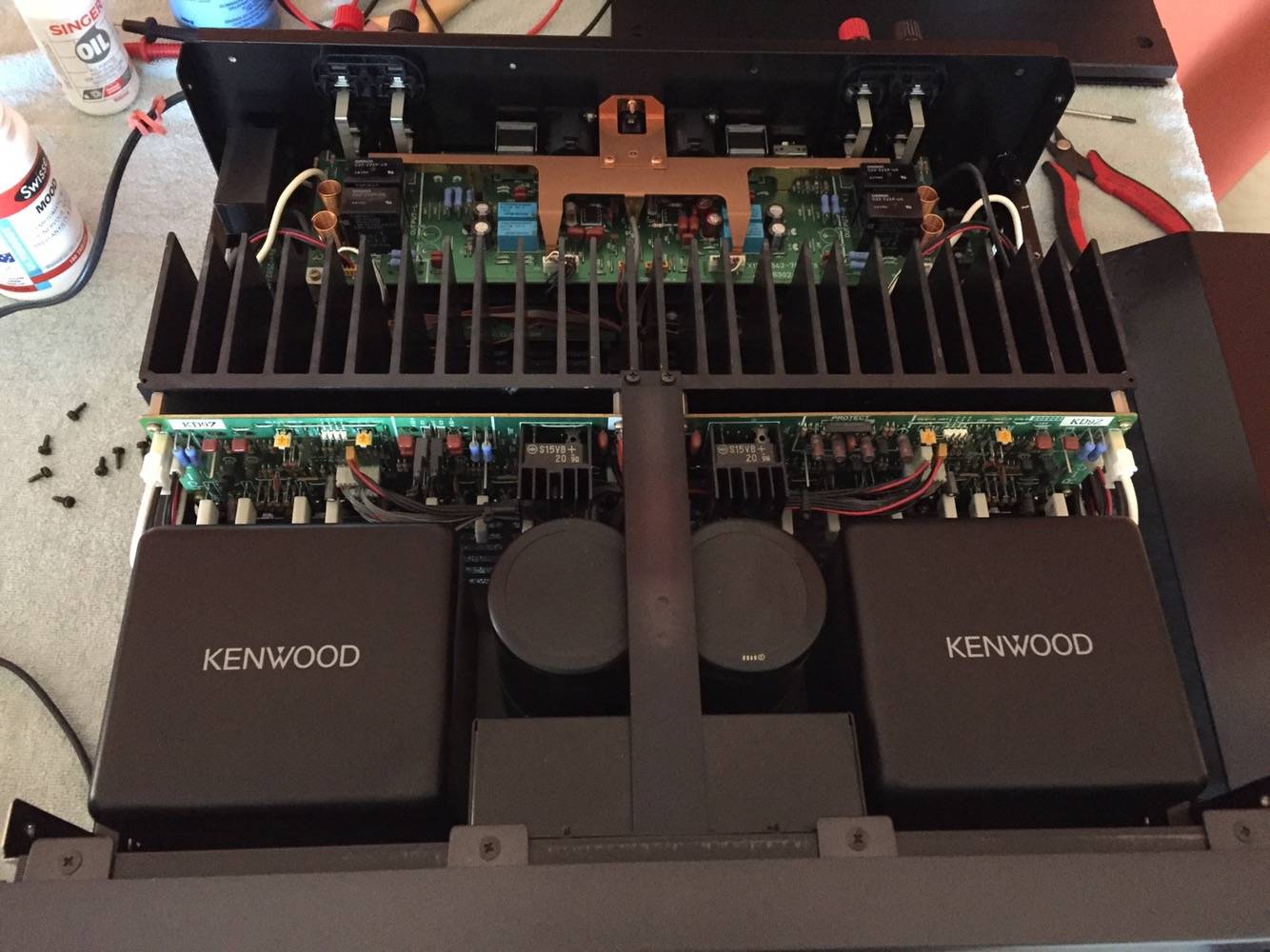
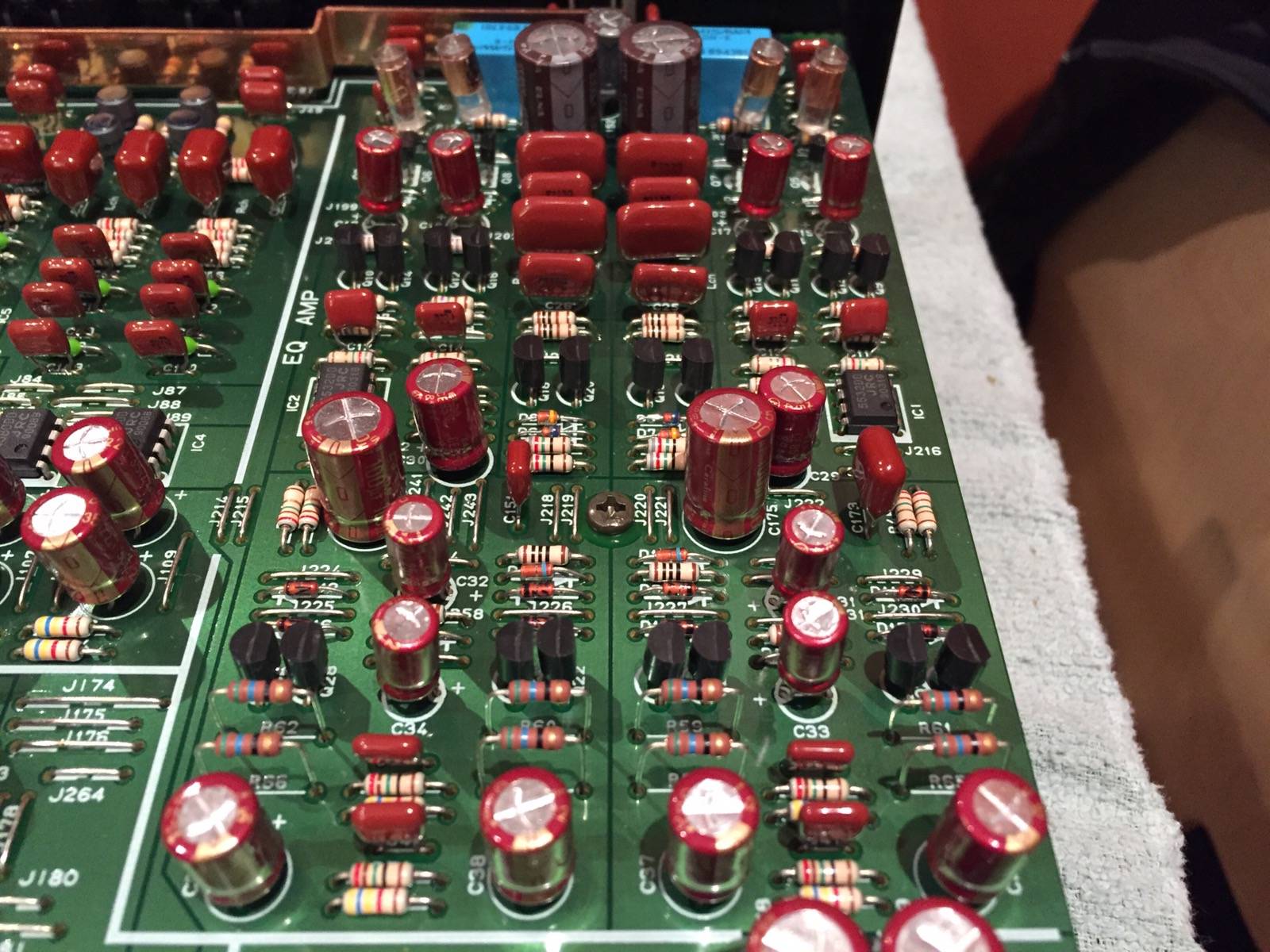
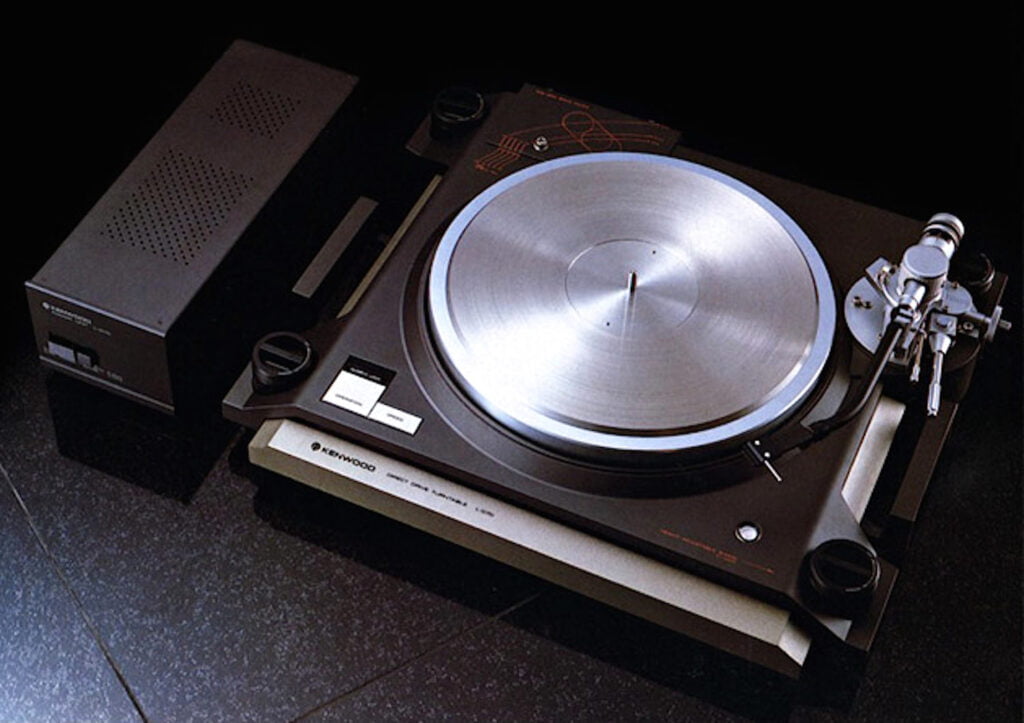
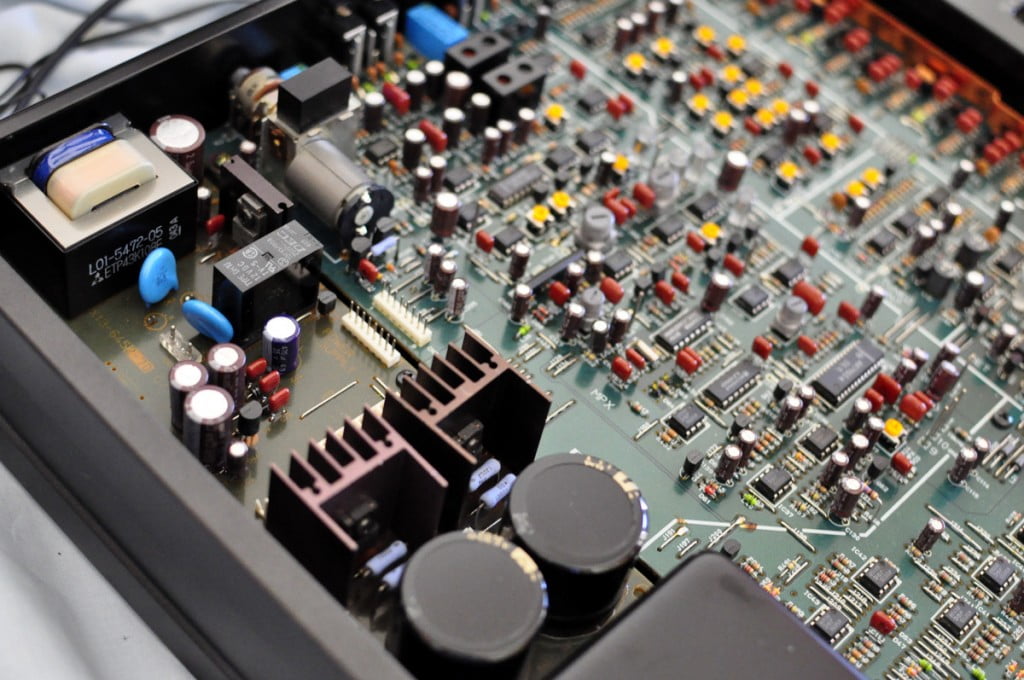
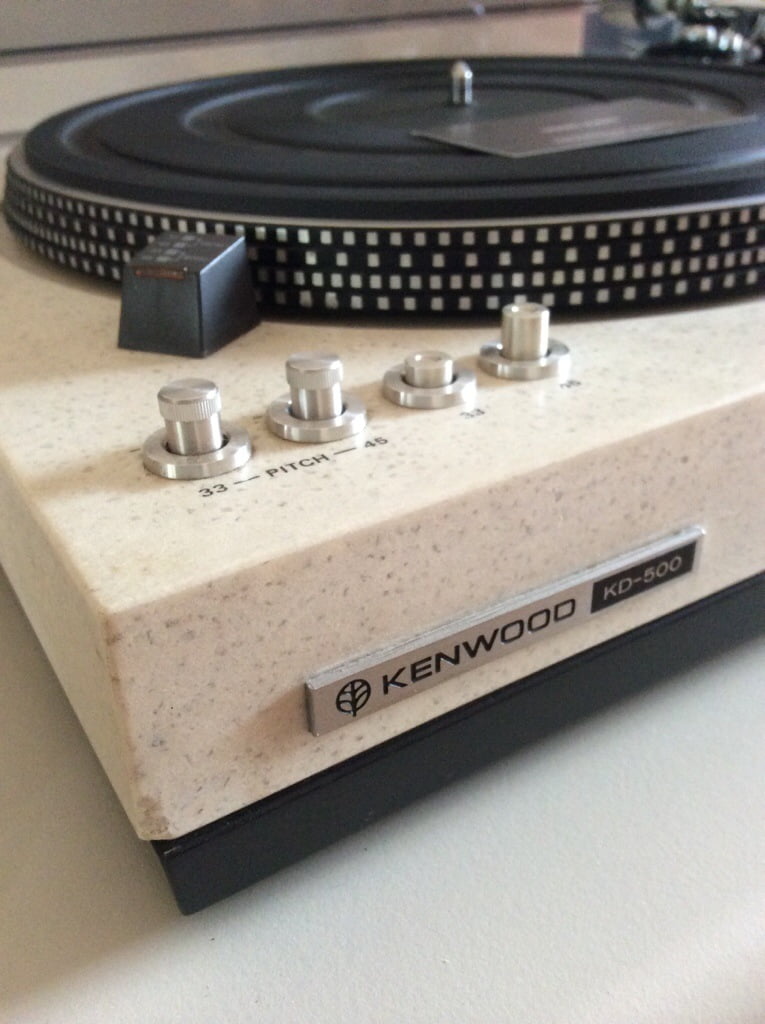
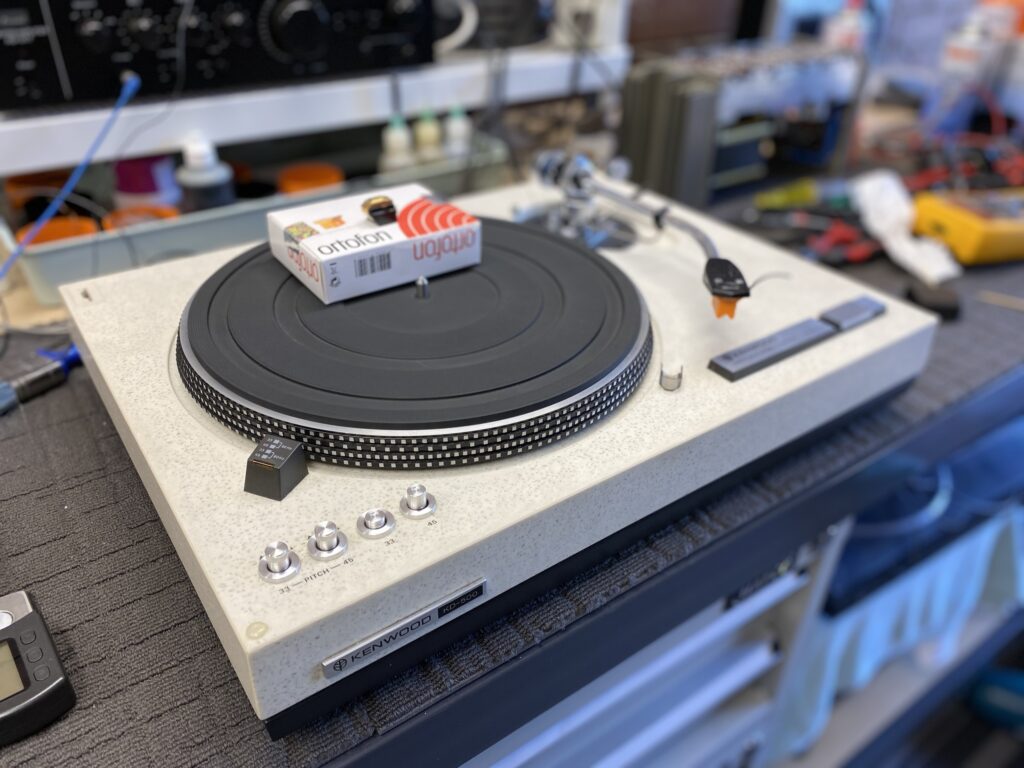
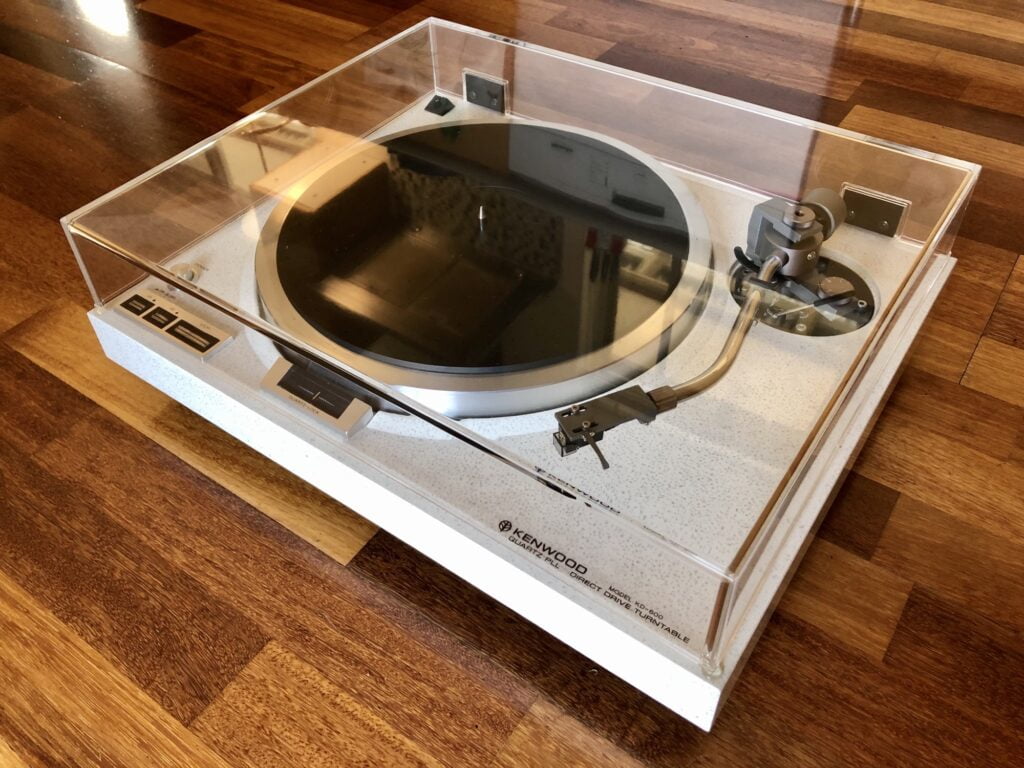
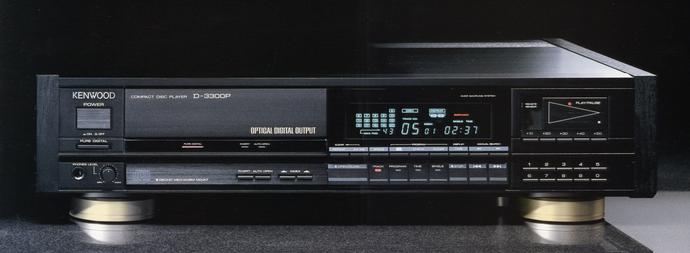
I have got a Kenwood L-1000 series minus the L-1000T tuner, how much are they worth now ?
Hi Les, good question but who knows? So many variables, condition, service history, voltage etc etc. When were they all last serviced and by who?
like a german test report stated, built for eternity (L-1000C)
Absolutely!
STORIA DELLA “ACCUPHASE-KENWOOD” E DELLA PROGETTAZIONE DELLA SERIE ” L 1000″.
Nel 1946, due fratelli, Nakaichi e Jiro Kasuga, insieme allo zio Hisao ed il cognato Hideo Nakano, fondarono un azienda a Tokio, con l’intento di costruirne bobine elettromagnetiche per apparecchi radio, denominata Trio Kenwood (Trio perché formata da tre soci; i fratelli Kasuga possedevano solo una delle tre quote della società).
Nel 1953 la Trio Kenwood costruì il primo proprio apparecchio per radioamatori. Nel 1957 il primo proprio sintonizzatore per onde FM. Nel 1962 aprì la sua filiale statunitense e l’anno successivo sotto il nome Kenwood cominciò a produrre altoparlanti di qualità. Nel 1968 aprì in Belgio la sede europea in seguito trasferitasi a Francoforte.
Tra le varie vicissitudini, tale azienda, specializzata nella costruzione di elettroniche finalizzate all’ascolto audio, andò man mano espandendosi, quindi i co-fondatori unitamente ai collaboratori tecnici, per assecondare il mercato, con il passare degli anni, scesero a qualche compromesso tra costo e qualità; tutto questo contro il parere di Nakaichi e Jiro Kasuga(tra i primi fondatori).
Nei primi anni 70, i fratelli Kasuga , sempre alla ricerca del meglio, all’interno della Triokenwood fecero nascere un laboratorio d’élite per inseguire il loro desiderio di creare l’elettronica perfetta. Tale laboratorio, ove concentrarono i migliori strumenti a disposizione dei migliori tecnici, si occupava di ricerca e costruzione e venne denominato dapprima KENSONIC Labs , poi tempo dopo, nel 1972 ed esattamente il 1 giugno, prese il nome di ACCUPHASE LABS (denominazione derivata da ACCURACY-PHASE) accuratezza in ogni fase.
Negli Accuphase Labs la qualità e di conseguenza i costi di realizzazione, salirono così tanto, che vi fu la necessità per i fratelli Kasuga, di scindersi dall’azienda principale. Questo fu necessario
per sottrarsi ai limiti imposti da quest’ultima, circa il rispetto di certi margini di spesa dettati delle leggi economiche di mercato e le non infinite risorse finanziarie a disposizione.
Finalmente i fratelli Kasuga riuscirono a realizzare il loro sogno; uscire dalla TrioKenwood ed essere alla guida della ACCUPHASE che divenne il loro marchio; dapprima azienda di nicchia, negli anni divenne leader mondiale di prodotti hi-end. Il non plus ultra della tecnologia ingegneristica e della qualità audio, senza alcun compromesso. Azienda la Accuphase, tutt’ora al top mondiale con ben pochi concorrenti allo stesso livello.
Dalla scissione, il marchio Triokenwood venne perso e le sue sedi divennero tutte KENWOOD corporation, azienda che negli anni 80 realizzò degli ottimi prodotti, anche nel settore hi-fi car, ma ovviamente, molto più consumer rispetto ai prodotti Accuphase per l’audio-home.
Anno 1990; é qui che entra in gioco la serie L 1000, assemblata fino al 1996.
Dopo aver prodotto i famosi ed ottimi amplificatori integrati della serie” ka “, i quali riscuotettero un vero successo, in casa Kenwood si decise di fare di più…..molto di più, di fare sul serio; mettere le mani all’ interno dei laboratori Kensonic-Accuphase, laboratori che sotto la Direzione TrioKenwood , anni prima, si erano occupati di finali monoblocco, denominati L05 M ed L 07 M e del loro preamplificatore L07c (Vere e proprie pietre miliari dell’ hi-end).
Dai cassetti dei laboratori Kensonic-Accuphase, che vennero presto riattivati, si tirò fuori un progetto superiore, quello studiato ed ingegnerizzato dai tecnici Accuphase.
Forse fu proprio per ripicca nei confronti dei fratelli Kasuga colpevoli di aver abbandonato l’azienda madre, che in Kenwood si decide di attaccare la nicchia del mercato che Accuphase una volta scissa si stava ritagliando.Per farlo Kenwood sfruttó tutti i brevetti, gli studi, le esperienze di laboratorio fatte fino a quel momento; risultati che ACCUPHASE fu costretta a lasciare a Kenwood come prezzo di scissione dalla casa madre.
Con queste premesse, si crea un prototipo concorrente diretto della Accuphase, con all’ interno le loro stesse armi, addirittura alimentazioni e circuitazioni di altissimo livello e già pronte all’uso.L1000.
Un progetto in cui Kenwood investe tante risorse, di quelli senza compromessi, composto di costosissimi materiali schermanti ed antivibranti in fibre speciali, con la peculiarità di trasmissione bilanciata del segnale in tutti gli stadi. Un apparecchio in cui il segnale può entrare bilanciato e continuare ad esserlo fino alla fine con notevoli incrementi di guadagno nel rapporto segnale rumore fino a 5/10 db in più e sentite bene, fino a 125db, ( non per finta come in certe elettroniche di altri marchi anche costosissimi).
Sovente capita che amplificatori, anche di marchi altisonanti, una volta aperti, rivelano l’ inganno dell’ ingresso bilanciato, che inesorabilmente poi viene sbilanciato all’interno senza seguire una continuità.
L 1000 M invece non tradisce le aspettative.
Un progetto fino ad allora lasciato in sospeso per gli esosi costi di produzione.
Un impianto stereo di un’altro pianeta. All epoca, completo, costava quasi quanto un’auto nuova. ( Un impianto che non era per tutti).
Un sintonizzatore L1000T, un lettore cd Hi-end L1000D, Un pre-amplificatore L1000C di livello altissimo, un finale di potenza L1000M, completamente simmetrico (simmetria ed ordine su qualsiasi scheda…..nulla é lasciato al caso), con cablaggi punto a punto e circuitazione discreta a doppia alimentazione mono ( canali complemente separati), enormi condensatori, capace di erogare 150 watt, rms ( misurati 20 watt in più ai dichiarati), su 8 ohm con una distorsione di solo 0,006%( linearità da valvole), da 5hz a 100khz (estensione di frequenza da primato) possibilità di gestire i 4 ohm senza problemi di sorta ( macchina che grazie alla sua costruzione e le sue connessioni, per le potenze che gestisce non risente in modo importante dell’effetto joule, non é una stufa), quasi tutta l’ energia che riceve la trasforma in musica.
Proprio un cattivo ragazzo…..un diavolo da 52 kg (nella configurazione completa),quasi 30kg solo il finale. Quest’ultimo vestito di sobrietà (pare che per il design esterno vi fu la consulenza di Jeff Rowland), ma allo stesso tempo un angelo capace di erogare un suono velocissimo, arioso, leggero sugli alti, mai colorato sui medi o sui bassi, capace di trasferire qualsiasi sfumatura, senza mai aggiungere ne togliere.
A sorprendere é il controllo totale di ogni suono affidato agli altoparlanti…..Ampere a volontà , gestiti in modo eccelso, ed il tutto a qualsiasi livello di potenza richiesto, anche sui diffusori più ostici.
La sua chiave magica é che non é mai affaticante, anche ad alte pressioni sonore fa produrre dopamina…..dona relax e ristoro totali.La sensazione che dona L 1000 é che abbia la consapevolezza di ogni nota che eroga, controllando ogni virgola, a sorprendere é che fa il tutto senza appesantire l’ascolto.
La mia personale opinione é che la serie L, soprattutto parlando di pré e finale, sia per Kenwood il miglior prodotto mai realizzato, la punta di diamante. Il suo interno superbo, cuore-polmoni-stomaco é targato Accuphase. Vestito da berlina ha un motore da formula uno. Oggi pre amplificatore e finale puoi trovarli usati a circa 2000 euro, forse anche meno, perché chi vende questo apparecchio non ha capito che venderlo, non è assolutamente da audiofili.
Sappiate che se lo vendete ed un giorno non vi fosse più la possibilità di acquistarlo usato, per ascoltare ai suoi livelli dovrete necessariamente rivolgervi ad elettroniche Accuphase, ai costi che ben conoscete.
Hi Stefano, thank you for your contribution which I have translated into English for the benefit of my mostly English speaking audience. This Accuphase-Kenwood history is known by many but will be interesting reading for those who were not aware of it. I really like the L-1000 series as well, especially the L-1000M! Many thanks for sharing!
Translation:
HISTORY OF THE “ACCUPHASE-KENWOOD” AND OF THE DESIGN OF THE “L 1000 ″ SERIES.
In 1946, two brothers, Nakaichi and Jiro Kasuga, together with their uncle Hisao and brother-in-law Hideo Nakano, founded a company in Tokyo, with the intention of building electromagnetic coils for radio equipment, called Trio Kenwood (Trio because it was made up of three partners; the Kasuga brothers only owned one of the three shares in the company).
In 1953, the Kenwood Trio built their first radio amateur device. In 1957 the first own tuner for FM waves. In 1962 he opened his US branch and the following year under the Kenwood name he began producing quality loudspeakers. In 1968 the European headquarters opened in Belgium and later moved to Frankfurt.
Among the various vicissitudes, this company, specialized in the construction of electronics aimed at audio listening, gradually expanded, therefore the co-founders together with the technical collaborators, to support the market, over the years, came down to some compromise between cost and quality; all this against the opinion of Nakaichi and Jiro Kasuga (among the first founders).
In the early 1970s, the Kasuga brothers, always looking for the best, created an elite laboratory within Triokenwood to pursue their desire to create perfect electronics. This laboratory, where they concentrated the best tools available to the best technicians, dealt with research and construction and was first called KENSONIC Labs, then sometime later, in 1972 and exactly on June 1, took the name of ACCUPHASE LABS (name derived from ACCURACY -PHASE) accuracy at each stage.
In the Accuphase Labs the quality and consequently the construction costs went up so much that there was a need for the Kasuga brothers to split from the main company. This was necessary
to avoid the limits imposed by the latter, regarding compliance with certain spending margins dictated by the economic laws of the market and the limited financial resources available.
Finally, the Kasuga brothers managed to realize their dream; leave the TrioKenwood and lead the ACCUPHASE which became their brand; at first a niche company, over the years it became a world leader in hi-end products. The ultimate in engineering technology and audio quality, without any compromise. Accuphase is the company, still at the top of the world with very few competitors at the same level. From the split, the Triokenwood brand was lost and its offices all became KENWOOD corporation, a company that in the 80s made excellent products, even in the hi-fi car sector, but obviously, much more consumer than Accuphase products for the audio- home.
Year 1990; This is where the L 1000 series, assembled until 1996, comes into play.
After having produced the famous and excellent integrated amplifiers of the “ka” series, which met with real success, at Kenwood it was decided to do more… ..much more, to get serious; get your hands inside the Kensonic-Accuphase laboratories, laboratories that under the management of TrioKenwood, years earlier, had dealt with monoblock power amplifiers, called L05 M and L 07 M and their L07c preamplifier (real milestones of hi -end).
From the drawers of the Kensonic-Accuphase laboratories, which were soon reactivated, a superior project came out, the one studied and engineered by Accuphase technicians.
Perhaps it was precisely out of spite towards the Kasuga brothers guilty of having abandoned the parent company, that Kenwood decided to attack the niche in the market that once split Accuphase was carving out. To do this Kenwood exploited all the patents, studies, the laboratory experiences made up to that moment; results that ACCUPHASE was forced to leave to Kenwood as a split price from the parent company.
With these premises, a direct competitor prototype of the Accuphase is created, with their own weapons inside, even top-level power supplies and circuits ready for use. L1000.
A project in which Kenwood invests many resources, of those without compromises, composed of very expensive shielding and anti-vibration materials in special fibers, with the peculiarity of balanced signal transmission in all stages. A device in which the signal can enter balanced and continue to be balanced until the end with considerable gain increases in the signal to noise ratio up to 5/10 db more and hear well, up to 125db, (not for pretense as in certain electronics of other brands also very expensive).
Often it happens that amplifiers, even of high-sounding brands, once opened, reveal the deception of the balanced input, which is then inexorably unbalanced inside without following a continuity.
The 1000 M, on the other hand, does not betray expectations.
A project that had been left pending until then due to the exorbitant production costs.
A stereo system from another planet. At the time, complete, it cost almost as much as a new car. (A facility that wasn’t for everyone).
An L1000T tuner, a L1000D Hi-end CD player, a very high-level L1000C pre-amplifier, a fully symmetrical L1000M power amplifier (symmetry and order on any board … nothing is left to chance), with point-to-point wiring mono dual power point and discrete circuitry (fully separate channels), huge capacitors, capable of delivering 150 watts, rms (measured 20 watts more than claimed), into 8 ohms with only 0.006% distortion (tube linearity), from 5hz to 100khz (record-breaking frequency extension) possibility of managing the 4 ohms without any problems (machine that thanks to its construction and its connections, due to the powers it manages, is not significantly affected by the joule effect, a stove), almost all the energy it receives transforms into music.
Such a bad boy… ..a 52kg devil (in the full configuration), almost 30kg only the final. The latter dressed in sobriety (it seems that for the external design there was the advice of Jeff Rowland), but at the same time an angel capable of delivering a very fast, airy sound, light on the highs, never colored in the mids or lows, capable to transfer any nuance, without ever adding or removing.
What is surprising is the total control of each sound entrusted to the speakers … Amps at will, managed in an excellent way, and all at any required power level, even on the most difficult speakers.
Its magic key is that it is never tiring, even at high sound pressures it produces dopamine … … it gives total relaxation and refreshment. surprising is that it does everything without weighing down the listening.
My personal opinion is that the L series, especially speaking of pre and final, is for Kenwood the best product ever made, the spearhead. Its superb heart-lung-stomach interior is branded Accuphase. Dressed as a sedan, it has a formula one engine. Today the pre-amplifier and power amplifier can be found used for around 2000 euros, perhaps even less, because those who sell this device have not understood that to sell it, it is absolutely not for audiophiles.
Know that if you sell it and one day there was no longer the possibility of buying it used, to listen to its levels you will necessarily have to contact Accuphase electronics, at the costs you know well.
Hi Mike,
Sorry for take so long to get back to you, I have had this since my Trio M1 Power Amp and M2
Pre-Amp was stolen back in the 1990’s, still have the manuals for the M1 and M2. I’m in the UK so my system runs on 240 AC and it is A1 condition never had a service yet, used with a
pair of KEF 104.2s and a pair of Wharfdale 102.2 TSR.
Hi Leslie, no worries, you’ve obviously been busy, it looks like your previous comment was about four years ago! So you’ve kept your lovely L-1000 gear I take it?
Yes I have still got my L-1000 gear love it to bits 🙂 I normally give it a good blow out to get rid of the build up of dust over time. There are some scratches from over time when the kit has been moved, but
in general looking very goo. Also got Bose series II 5 and Aurex microsystem SM-C15 and SY-C15.